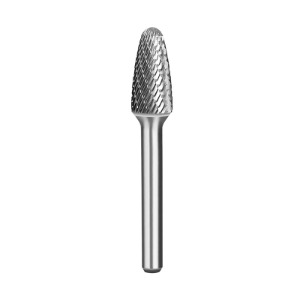Carbide Rotary Burs are widely used in metalworking, woodworking, and other precision applications because of their hardness and durability. One of the critical factors affecting their performance is the hardness of the material being processed. Understanding how different material hardness levels influence cutting efficiency can help operators optimize both productivity and tool longevity. This knowledge is particularly important for industries that require high-precision machining and consistent surface finishes.

Impact of Soft Materials on Performance
When working with softer materials, such as aluminum, copper, or certain plastics, cutting efficiency is generally higher. The softer structure allows the burs to remove material quickly without excessive force. This results in smoother cuts and reduced wear on the tool. However, softer materials can also cause clogging, as small chips or shavings may adhere to the bur’s flutes. Operators often need to adjust feed rates and use proper lubrication to maintain suitable performance. In such cases, the speed of rotation and pressure applied play key roles in improving cutting efficiency while preventing material buildup.
Medium-Hard Materials and Tool Adaptation
Medium-hard materials, including mild steel and certain alloys, present a different challenge. Cutting efficiency is somewhat reduced compared to soft materials because the tool encounters greater resistance. Carbide Rotary Burs must maintain sufficient sharpness and structural integrity to handle the increased stress. Heat generation also becomes more pronounced, requiring careful control of cutting speed and periodic pauses to prevent overheating. In addition, operators may choose burs with specialized coatings or geometries to enhance chip removal and reduce friction, thereby preserving cutting efficiency in medium-hard materials.
Hard Materials and Efficiency Limitations
Hard materials, such as stainless steel, titanium, and hardened tool steels, significantly impact cutting efficiency. The high material hardness slows down the cutting process and increases wear on the bur. In some cases, standard carbide burs may not provide acceptable performance, and advanced designs with reinforced tips or diamond coatings may be required. Heat buildup becomes a major concern, and continuous cutting can cause micro-fractures or chipping on the bur itself. Proper cooling, slower feed rates, and intermittent cutting are essential strategies to maintain efficiency and protect both the tool and the workpiece.
Influence of Material Composition
It is not only the hardness but also the composition of the material that affects cutting efficiency. Materials with varying grain structures or alloying elements can behave unpredictably. For example, high-carbon steels may cut slower than expected despite similar hardness values due to their tendency to work-harden during machining. Non-metallic materials with abrasive inclusions can accelerate bur wear, reducing cutting efficiency over time. Understanding these nuances allows operators to select the appropriate bur type, rotation speed, and cutting technique to achieve consistent results across a range of materials.
Cutting efficiency of Carbide Rotary Burs varies widely with material hardness. Softer materials enable faster cutting but may require strategies to prevent clogging. Medium-hard materials demand sharper tools and attention to heat management. Hard materials necessitate specialized burs and slower machining techniques to preserve efficiency and tool life. By carefully considering the hardness and composition of the workpiece, operators can optimize performance, reduce tool wear, and maintain high-quality results. Understanding these factors ensures that Carbide Rotary Burs remain a reliable choice across diverse machining applications.